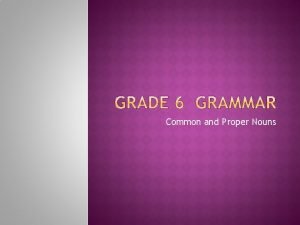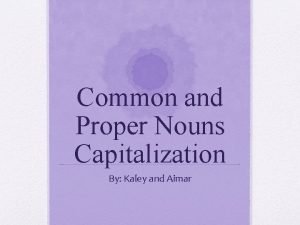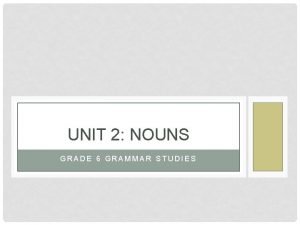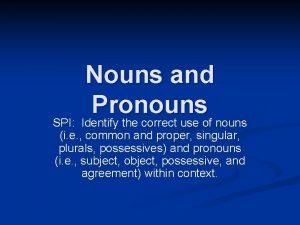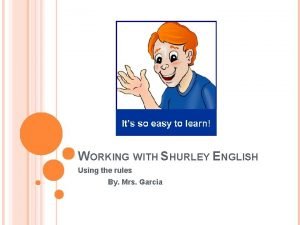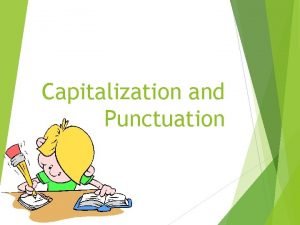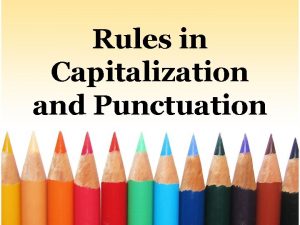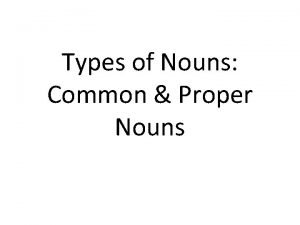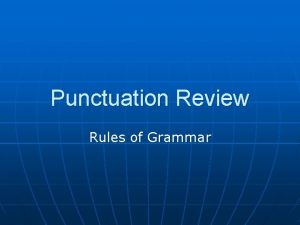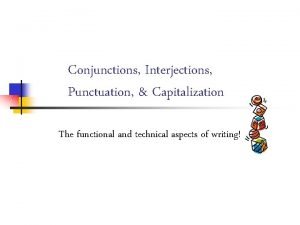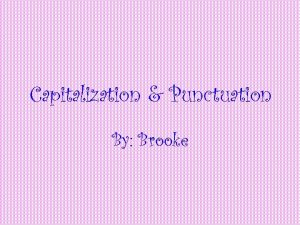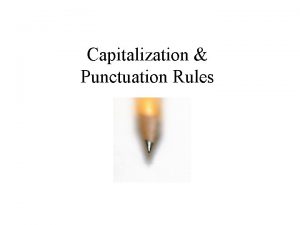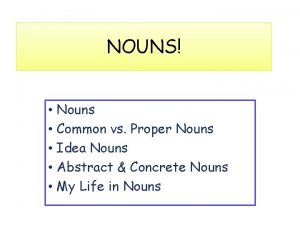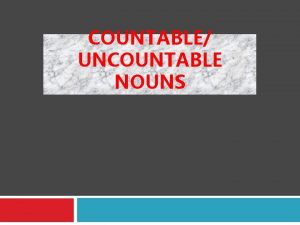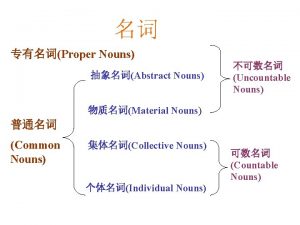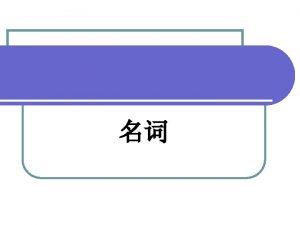CAPITALIZATION PUNCTUATION CAPITALIZATION Capitalize proper nouns and proper












- Slides: 12

CAPITALIZATION & PUNCTUATION

CAPITALIZATION �Capitalize proper nouns and proper adjectives. �Capitalize the first word of each sentence.

SEMICOLONS �Semicolons join two sentences without a coordinating conjunction. He likes apples; she likes oranges. He goes to Harvard; however, she goes to Yale. �Semicolons can be used in a series with commas for clarity. We went to London, England; Paris, France; Madrid, Spain; and Dublin, Ireland.

APOSTROPHES � Use apostrophes to make words possessive and to make contractions. � Possessive pronouns do not use apostrophes (hers, his, its, etc. ). � Any word before the apostrophe must be a REAL word (children’s toys, not childrens’ toys). � If the word is plural and ends in “s, ” add the apostrophe only (dogs’ owners). � For singular nouns ending in “s, ” add either “ ’s ” or an apostrophe only to the word. If the word is a singular proper noun, add the apostrophe only (boss’s or boss’, Mr. Jones’). � Do NOT use apostrophes to make words plural!

UNDERLINING/ITALICIZING �Underlining and italicizing are used for the same reasons. �Underline or italicize the titles of major works, such as newspapers, novels, magazines, CDs, movies, plays, etc. �Underline or italicize the names of ships, planes, trains, artwork, etc. �Underline or italicize foreign expressions.

QUOTATION MARKS � Quote titles of short works, such as short stories, poems, songs, articles, etc. � Quote dialogue and words copied from other sources. � Commas and periods always go inside the quotation marks, unless the quote is followed by a parenthetical reference. � Colons and semicolons belong on the outside of the quotation marks. � Place a question mark or exclamation point within closing quotation marks, if the punctuation applies to the quotation itself. � Place a question mark or exclamation point outside the closing quotation marks, if the punctuation applies to the whole sentence. � Use single quotation marks to enclose quotes within a quote. Use double quotation marks in all other situations. � Quotation marks may be used to indicate irony or to demonstrate some reservation about the word being used.

COMMAS 1. Adverb dependent clause/ comma / independent clause. An adverb dependent clause consists of a subordinating conjunction, a subject, and a verb. Commonly used subordinating conjunctions are shown below: If it rains, we will go inside. after because since until although before so that when as even though whenever as if if unless while 2. Independent clause / no comma / adverb dependent clause. When the independent clause comes first, there is no need for a comma. We will go inside if it rains.

COMMAS 3. Independent clause/ comma / coordinating conjunction / independent clause. Remember, the coordinating conjunctions are: F (for) A (and) N (nor) B (but) O (or) Y (yet) S (so). Tony likes pizza, but Joe likes tacos. 4. Subject / verb / no comma / coordinating conjunction / verb. Tony likes pizza but does not like vegetables. 5. Independent clause / semicolon / independent clause. When joining two independent clauses without a conjunction, you must use a semicolon. Tony likes pizza; Joe likes tacos.

COMMAS 6. Introductory participle phrase. When using an introductory participle phrase, it must be followed by a comma. Running down the hall, I tripped and fell. 7. Introductory prepositional phrase. When using an introductory prepositional phrase, it must be followed by a comma. After English class, we go to lunch. 8. Non-essential appositive or appositive phrase. Appositives must be set within commas, because they are not essential parts of the sentence. I wrote example sentences about my dogs, Cash and Diego, for our grammar review.

COMMAS 9. Non-essential dependent adjective clause. A dependent adjective clause consists of a relative pronoun, subject, and verb. Relative pronouns are listed below: Running down the hall, I tripped and fell. that which whom whose 10. Items in a series. When listing items in a series, you should have one less comma than items listed. Please buy apples, oranges, and bananas. I love my new, warm, red coat. 11. Noun of direct address. When addressing someone directly, their name or noun being used to address them should be set off inside commas. Emily, I hope you do well on the test. Please be quiet, class.

COMMAS 12. Day of the week, month / date, year. Dates should include commas, except between the date and month. Our winter break begins on Thursday, December 22, 2011, with an early dismissal. 13. City, state, country. A comma always goes between the city and state or city and foreign country. Our school is located in Waynesburg, Pennsylvania, United States of America. We traveled to Munich, Germany and Tokyo, Japan. 14. Introductory word. When using a non-essential introductory word, it should be set off with a comma. Hey, I saw you at the football game. So, how did you think you did on the test?

COMMAS 15. Interrupter. When interrupting a sentence with a non-essential word or phrase, it should be set within commas. The eighth grade, I believe, is ready for the Grammar Awards.
 River
River Capitalize all proper nouns.
Capitalize all proper nouns. Proper noun for city
Proper noun for city Underline the nouns class 4
Underline the nouns class 4 Common noun meaning
Common noun meaning Spelling capitalization and punctuation
Spelling capitalization and punctuation Capitalization rules shurley english
Capitalization rules shurley english Correct capitalization and punctuation
Correct capitalization and punctuation Rules of punctuation and capitalization
Rules of punctuation and capitalization Proper nouns vs common nouns
Proper nouns vs common nouns Why do we use question marks
Why do we use question marks Brackets rules
Brackets rules Mild interjection examples
Mild interjection examples
